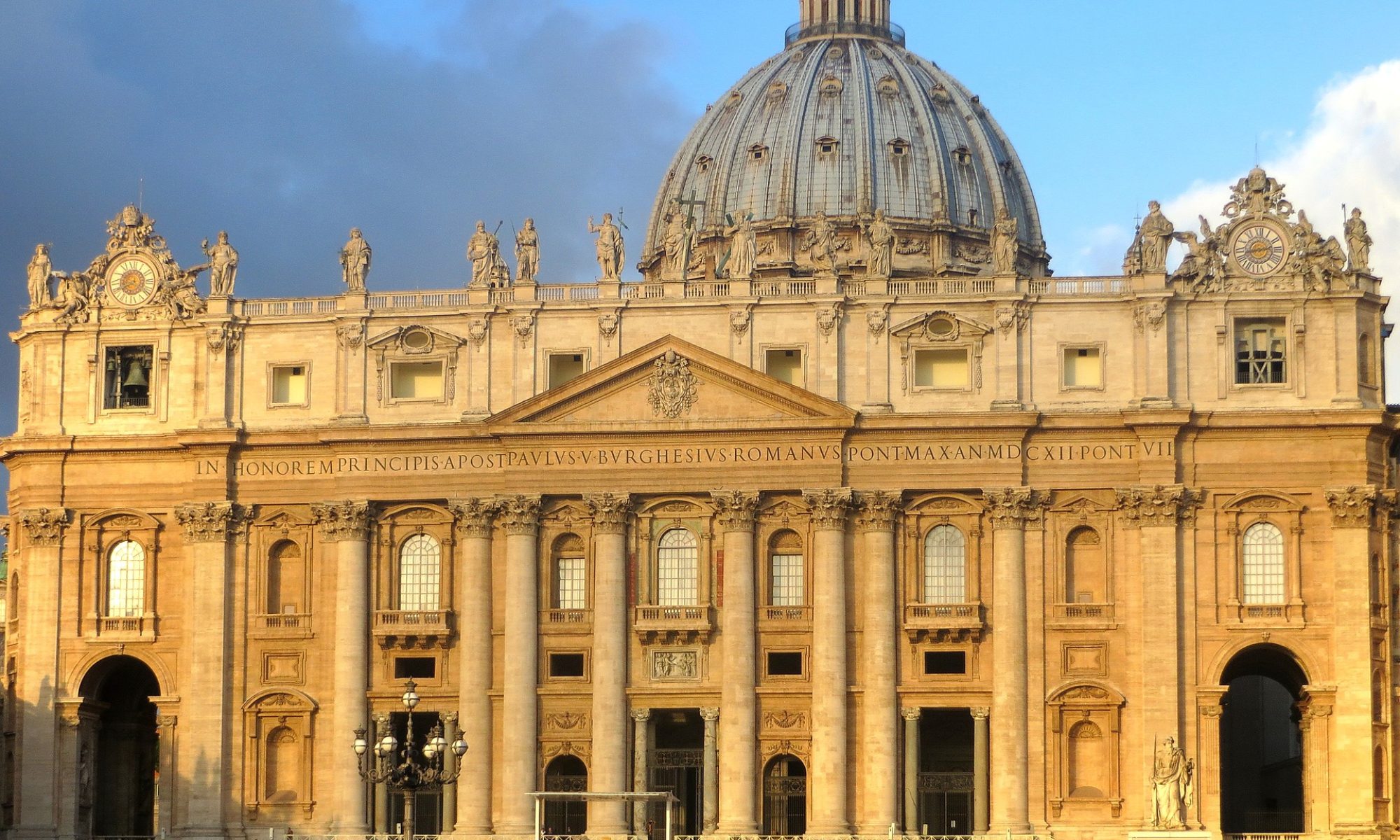Opening the Pontifical Yearbook is not an easy task. This thick book of more than 2350 pages contains all sorts of information about who’s who in the Vatican and what happens there. Despite the practical problems of handling it, it is nonetheless a mine of precious information about the center of the RC Church and the Vatican city.
For example, one reads that the official titles of the Pope are the following: “Bishop of Rome”, “Vicar of Jesus Christ”, “Successor of the prince of the Apostles” (i.e. Peter), “Supreme Pontiff of the Universal Church”, “Primate of Italy”, “Archbishop and Metropolitan of the Roman Province”, “Sovereign of the State of the Vatican City”. The last title, “Servant of God’s servants”, is in stark contrast with the grandeur of the previous ones.
1. Absolute Power, with one Exception
The list of papal titles is somewhat astonishing and covers religious offices, political tasks and organizational responsibilities. He is one of the last examples of absolute sovereignty. In his person, the executive, legislative, and juridical powers are all concentrated. Until he dies, the Pope remains the Pope. The only restriction on his power is that he cannot choose his own successor. In other words, the papacy is not a family dynasty. This task is given to the College of electing cardinals, i.e. cardinals who are under 80 years old and who gather in “conclave” (from the Latin cum clave, i.e. locked up with a key) in the Sistine Chapel to vote on the new Pope.
This is not to say that the reigning Pope does not influence the vote for the election of the next one. Actually, although he will not be present (!), he has a strategic role to play. As a matter of fact, the Pope has the authority to select the new cardinals. So in choosing the new “princes” of the RC Church, he shapes the College that will vote his successor. This gives him a real, albeit indirect influence on the selection process of the next Pope. By way of analyzing the chosen members of the College (i.e. their spiritual weight and ecclesiastical provenance) it is therefore possible to paint a somewhat accurate and likely picture of who the next pope will be.
2. The New “Northren” Cardinals
On February 18th, Pope Ratzinger “created” (this is the technical verb) 22 new cardinals, although only 18 of them became part of the electing College because they are under 80. The College is then made up of 125 cardinals, a number that will decrease in a short time because some of its members will turn 80 soon and therefore will be excluded from it.
Let’s have a look at the geographical map of the College. What appears interesting is the proportion between the macro-regions. On the one hand, there are 67 Europeans (more than half of the College), and if we add the North-Americans and the only Oceanian, the number of the cardinals coming from the Northern part of the globe is 83 out of 125. On the other hand, the number of Latin American, African and Asian cardinals is only 41. Nearly two thirds of the College comes from the ancient, established, powerful churches of the West, although most of these churches are currently facing a long-term phase of decline. Only one third of the College comes from Southern churches which are younger, less traditional, perhaps poorer, but are growing in terms of practice and number of vocations to the priesthood.
Thus the College now reflects more the “older” face of the RC Church than its “new” profile. It is a College with a distinct Ratzingerian face. Does it mean that Pope Ratzinger wishes his successor to be a Northern Pope that will share his emphasis on calling the West back to the RC Church? Does it mean that the secular West will be the primary item on the next Pope’s agenda as it is in Benedict XVI’s one?
3. The Power of the Curia
The other interesting feature to consider is the role of the electing cardinals. After the creation of the 22 new ones, 44 of them now belong to the Roman Curia. In other words, they are high ranking ecclesiastical figures who live in Rome and lead various Vatican departments but do not have direct pastoral roles. They bring to the Church a more “Roman” perspective than a “catholic” (i.e. universal) one. Whereas bishops around the world have first-hand experience in leading a church even at the parish and grass-roots level, the Roman Curia has a more “political”, self-referential culture. Generally speaking, they are more able diplomats than preachers and pastors. Their expertise is more in canon law than in missiology.
Summing up these two indicators, here is a possible portrayal of the next Pope: a Northern cardinal with a distinct “Roman” soul. Perhaps the next Pope will be totally different, but at least this portrayal corresponds well to Benedict XVI’s own outlook.
Leonardo De Chirico
leonardo.dechirico@ifeditalia.org
Rome, 20th February 2012

